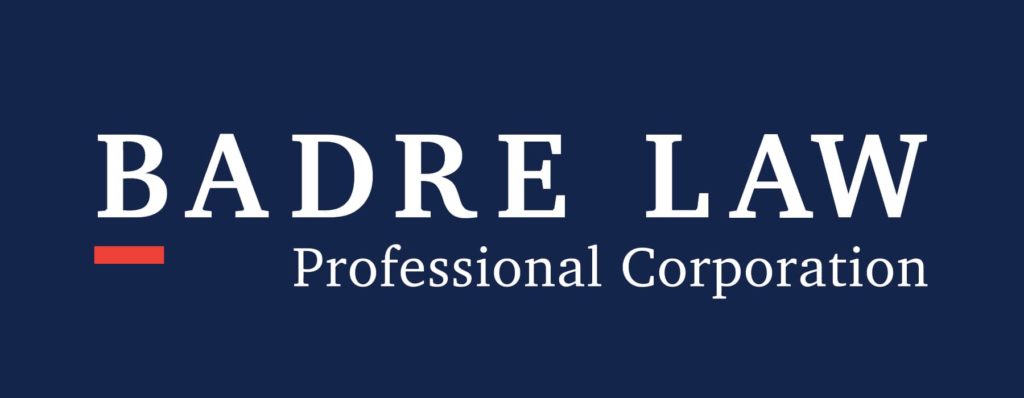Most people want to avoid bringing a wrongful dismissal lawsuit against their former employer. From an employment lawyer’s perspective, this is usually our last resort as well. Our goal is to negotiate a fair compensation package for you, while maintain a proper relationship between you and your former employer, and by minimizing the cost, risk, and delays for you.
One of our first steps is to contact your employer and open negotiations before we start a lawsuit. Before we can do this, we need to conduct a full assessment of your case and determine your proper and reasonable entitlements.
Information Required for a Wrongful Dismissal Case
To do so, we need to collect relevant information and records about your situation. Records that are important for you to provide us with so that we can review and calculate your entitlement include:
- Your employment contract(s).
- Any employee handbooks or manuals.
- Communication between yourself and your employer, such as letters or emails.
- Your termination notice.
- Pay stubs for your regular paycheques and any bonus pay cheques.
- Proof of your alternative job search efforts.
- Any receipts or proof of out of pocket expenses you incurred as a result of your termination.
You may not always have access to these records, this is okay. For example, you may have an oral agreement with your employer instead of a written employment contract. When this happens, try to remember as many details as possible about the terms of your employment, such as your hours of work, your duties and responsibilities, salary, bonus pays, vacation and leave entitlements, and so on.
We will also gather particulars about your termination, such as:
- On what day were you terminated?
- How much notice or pay in lieu of notice did you receive upon termination?
- In what manner were you terminated (in writing, verbal private meeting, suddenly and publicly)?
- What reason were you given for your termination, if any?
Mitigating your Damages
Another important aspect to your case will be whether or not you took steps to minimize your losses after your termination. This is known as “mitigation” or mitigating your damages. If you are terminated, and even if you are entitled to termination notice or pay, a court will reduce the amount you are owed if you fail to take steps to mitigate your damages.
In employment law, mitigation requires you to try to seek out another job. Courts understand that losing your job is stressful and you are not expected to immediately start your job search the next day. However, you should start looking for and applying for new jobs as soon as you can and not wait too long before doing so.
Keep records of your job applications and results. This can include keeping notes in a diary, or keeping paper or electronic records of such things as:
- Job application forms
- Cover letters and resumes
- Emails or letters with prospective employers
- A calendar of interview dates
- A log noting what jobs you did not get interviewed for, or did not get hired for
- Any job offers you received
These records will strengthen your case because your employer will try to prove that you failed to take reasonable steps to minimize your potential losses. You do not have to be perfect when it comes to mitigation, you just have to try your best. As long as you demonstrate to a court that you did what a reasonable person would in all of the circumstances, your entitlement to compensation should not be reduced.
In some circumstances, mitigation will require that you stay with your employer even after being fired. For example, if your employer offers you four weeks of working notice on termination, but you choose to leave immediately, you may not be entitled to compensation for the four weeks that you chose not to stay and work.
However, this is not always the case. If you can prove that continuing to work for the employer will be humiliating or embarrassing, then you are not required to stay. In such cases, your employer must pay you termination pay instead of notice.
Out of Court Steps
There are a number of steps that will take place in your employment case when you hire an employment lawyer or human rights lawyer to represent you. While every case is different, as your lawyers we will try our best to resolve your case before starting a formal lawsuit in court. These out of court steps that we will take on your behalf will include:
- Gathering evidence to support your case;
- Assessing the strengths and weaknesses of your case; and
- Pre-litigation negotiations with your employer.
1. Evidence Gathering
The first thing we do is gather all the relevant information about your case. This will include collecting documents and records in your possession, as well background information about your work circumstances and your termination.
It is important you are honest with us about all of your circumstances. If your employer is alleging that you committed some sort of misconduct, you should tell us. As your lawyers, we are bound by solicitor-client confidentiality, which means we cannot disclose the information you tell us to anyone else, except under very limited conditions.
Keep all documents you have that are relevant to your case. This is because there is a legal obligation in any lawsuit to provide the other side with all relevant information and records about your case. This is to avoid what is commonly known as “trial by ambush.” In Ontario, both sides must present all documents and records they have or are aware of that are relevant to the dispute.
2. Assessment of Claim
Once we have all the facts and records about your case, we will review the information you provided and give you our opinion on your case.
We will advise you of what possible compensation we believe you may be entitled to, a potential range of awards you may receive, the strengths of your case, as well as the risks you face going forward.
Please be aware that such assessments are not perfect or a precise calculate. We can never guarantee how a judge will view your case. We rely on our experience and knowledge to provide you with the most accurate estimate we can for your situation. We will also update you as new information comes to light in your case.
3. Pre-Litigation Negotiations
Once we have reviewed your case, we will write to your employer and open negotiations, before we start a lawsuit. This is a great opportunity to explain to the employer the basis for your case and request compensation through an out of court settlement.
Generally, a settlement will meant hat you to accept less than you might otherwise receive if successful at trial. This is because settlement inherently means compromise by both sides, and recognition of the risks that each side faces if they go forward with the claim.
Collecting information about your case is crucial to this stage, because the more records we have to support your claim, the stronger our position will be when we try to negotiate a settlement with the other side.
Remember to let your lawyer do the talking for you. Do not try to negotiate behind your lawyer’s back with your employer directly. You may say something or disclose information that hurts your case and limits your lawyer’s ability to get you a fair settlement. It may undermine our position in negotiations if you are secretly consulting with your employer behind the scenes.
If we are unable to resolve your case at this step, then we will speak with you about starting a formal lawsuit in court.
The Court Process
In every case, we do our best to try to resolve your dispute before starting a lawsuit in court. Unfortunately, not all cases can resolve outside of court, and we may have to start a lawsuit for your claim.
Generally speaking, we have a maximum of 2 years after the date you were terminated to start a lawsuit. This deadline means it is important for you to inform us if you were fired as soon as possible, and to remain in regular contact with our office about your case.
Every case is different, but most court cases will follow the steps set out below.
1. Pleadings
The first step in a court process requires us to draft and file a Statement of Claim. This is a document that sets out your version of events. We make a variety of allegations that we will then have to prove in court.
Once this Statement of Claim is filed and sent to your employer, the employer will file their Statement of Defence. This is where the employer will deny your allegations, and present their version of the facts.
You then have the final say, and can file one final pleading known as a Reply. A Reply is necessary where the employer raises new allegations in their Statement of Defence which were not addressed in your Statement of Claim. A Reply is not an opportunity to repeat what you already said in your Statement of Claim. Often, Reply pleadings are not necessary.
Your employer may also file a Counterclaim, which is where they claim damages against you. For example, your employer may counterclaim against you if they believe you stole company property.
If a counterclaim is commenced, you must file a Defence to the Counterclaim. This is where you provide your explanation in response to the employer’s Counterclaim.
2. Discovery
Once all pleadings are completed, then the parties will schedule Examinations for Discovery, or just “discovery” for short.
Discovery is an opportunity for each side to question the other party. As your lawyers, we will question a representative of your employer. Similarly, your employer’s lawyer will question you about the case.
We will be present at your discovery to make sure no improper questions are asked. We will also meet with you before your discovery to prepare you for what to expect and to explain the process in detail.
3. Mediation
After discovery comes Mediation. Mediation is mandatory, which means all parties must participate in mediation at some point in the case before the matter goes to trial.
Mediation is run by a mediator, who is usually a former, senior and experienced lawyer. The mediator is a neutral third party which means they have no interest in the case one way or another. Their role is to try to help the two sides reach a mutually acceptable compromise for settlement. Mediation is often the best chance you have to resolve your case.
4. Summary Judgment
Most employment lawsuits that do not settle at mediation are resolved by what is referred to as Summary Judgment Motions. A Summary Judgment motion is a process by which a judge will hear your case without a full trial. Instead, the case is done in writing with paper evidence. The judge reviews the records, and makes their decision based on those records. Summary judgment motions are an expedited, cheaper alternative to full trials.
5. Pre-Trial & Trial
If your case does not go to Summary Judgment, then the final step is the process is trial. Trial is where you would be called as a witness in person to give testimony (evidence) in front of a judge or judge and jury. Trials are long and expensive, which is why so many steps take place before hand to try to give the parties every opportunity to resolve the dispute beforehand.
Just before a trial, you will attend a pre-trial conference. This is usually the final real opportunity for settlement just before trial. At a pre-trial conference, a judge will review your case and give their opinion as to what they think will happen at trial. This helps the parties understand, realize, and appreciate their risks going forward. If the matter is not resolved at the pre-trial conference, then the judge who participated cannot be the same judge who hears the actual trial.
Once a trial is completed, the judge will make their decision and determination of what entitlements to compensation you are to receive, if any.


